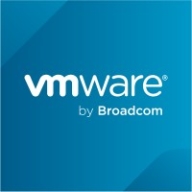

CloudStack and VMware Aria Automation compete in the cloud management and automation domain, appealing to enterprises enhancing cloud operations. VMware Aria Automation exhibits a feature advantage with its extensive offerings.
Features: CloudStack supports API-driven operations, enables scalability across multiple hypervisors, and offers simplified management. VMware Aria Automation includes advanced provisioning automation, governance, and lifecycle management, optimized for complex cloud environments.
Room for Improvement: CloudStack could benefit from an enhanced user interface, better documentation, and more frequent updates to improve stability. VMware Aria Automation might improve by streamlining complex customizations, increasing integration capabilities, and simplifying initial setup processes.
Ease of Deployment and Customer Service: CloudStack offers quick deployment with community-based support. In contrast, VMware Aria Automation involves complex deployment processes but provides extensive customer service and professional support for intricate setups.
Pricing and ROI: CloudStack offers a cost-effective entry point with solid ROI for those embracing open-source solutions. VMware Aria Automation, though pricier at the onset, promises substantial ROI through its comprehensive feature set and robust automation capabilities.
| Product | Market Share (%) |
|---|---|
| VMware Aria Automation | 9.4% |
| CloudStack | 3.4% |
| Other | 87.2% |


| Company Size | Count |
|---|---|
| Small Business | 13 |
| Midsize Enterprise | 6 |
| Large Enterprise | 12 |
| Company Size | Count |
|---|---|
| Small Business | 32 |
| Midsize Enterprise | 24 |
| Large Enterprise | 130 |
VMware Aria Automation is a cloud management tool that allows companies to simplify their cloud experience through a modern automation platform. The solution is designed to deliver self-service clouds, multi-cloud automation with governance, and DevOps-based security and infrastructure management. It helps organizations improve IT agility, efficiency, and productivity through its various features.
VMware Aria Automation has multiple use cases that include the following:
VMware Aria Automation Features
VMware Aria Automation has various features that allow users to easily perform operations. Some of the solution's capacities include:
VMware Aria Automation Benefits
VMware Aria Automation offers its users various benefits. Some of the biggest advantages that the solution brings to companies that utilize it include:
Reviews from Real Users
Awais J., CTO/CEO at a tech services company, likes VMware Aria Automation because it saves a lot of time, provides more visibility, and has extensive automation capabilities.
An IT consultant at a government rates VMware Aria Automation highly because the product gives you flexibility to analyze and consume resources.
We monitor all Cloud Management reviews to prevent fraudulent reviews and keep review quality high. We do not post reviews by company employees or direct competitors. We validate each review for authenticity via cross-reference with LinkedIn, and personal follow-up with the reviewer when necessary.